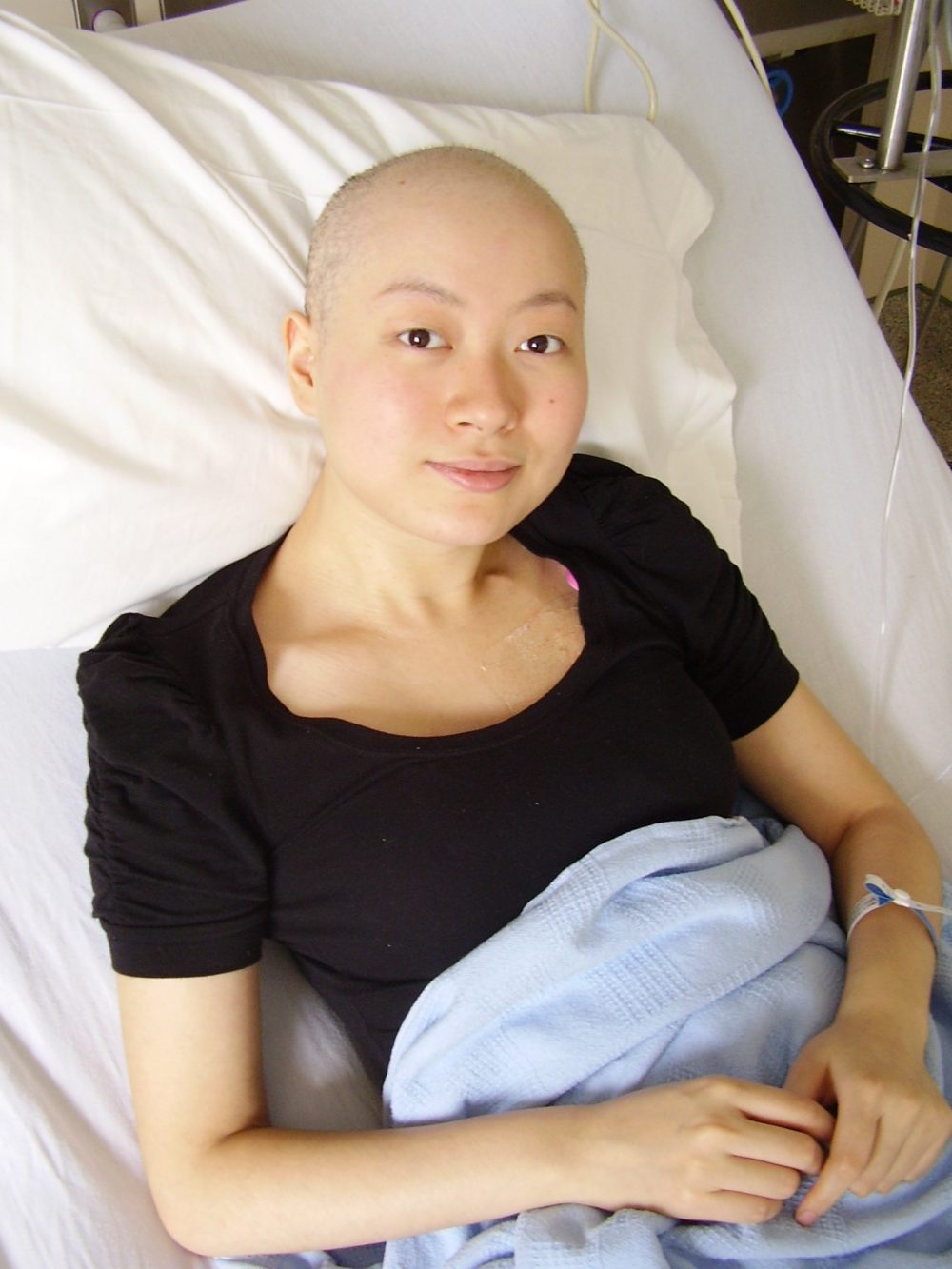Sabrina Wang
Sabrina had blood cancer (Acute Myeloid Leukemia) twice in her early 20’s and now lives with an irreversible lung condition called Bronchiolitis Obliterans as a result of the cancer treatments.

She says “Fitness has completely transformed my life after cancer and I believe it is a major reason why I’m still alive today and despite having a serious lung complication, I’m still able to maintain a normal life and live without limitations. “
1. When I discovered about my condition
I was diagnosed with Leukemia a few months after my 19th birthday, in July of 2009. I went to the doctor’s one day during summer break in between first and second year of university, because my period hadn’t come for a couple of months. After she ruled out pregnancy, she decided at the last minute to send me for a blood test. She told me she wanted to see if a hormone imbalance was the cause of my irregular menstrual cycle–it turned out to be something much more sinister. She called me that afternoon and instructed me to go to the hospital right away. A few days and a myriad of tests later, I received the official diagnosis of Acute Myeloid Leukemia. And that was the start of an 8-month long journey of chemotherapy. Luckily, I responded well to the treatment and the doctors were optimistic about my prognosis. But almost two years later, in 2009, the Leukemia returned. This time, I required a bone marrow transplant from an unrelated donor in order to have a fighting chance at survival. In August 2009, I received the transplant and I have been in remission ever since.
2. My fitness routine

Before my diagnosis I was not active at all. I hated exercising and would often skip out on physical education class in high school. Because of this lack of exercise, a few months after the diagnosis, I found myself in terrible shape. my muscles became extremely weak and I was suffering from aches and numbness all over my body from lying down too much. I was also short of breath and couldn’t even walk for more than a few minutes at a time. The doctors told me I needed to start doing some light exercises. I was reluctant at first but with the encouragement of my medical team and my family, I started to take daily walks. At first, I could only do short and slow walks. Even 10 minutes walking on flat ground wore me out. I gradually improved from there and my 10-minute walks turned into 15-minute walks, then 30 minutes, and so on. Eventually, I got to the point where I could walk for an hour or more each day, on top of doing exercises with resistance bands to help strengthen muscles. Then I started swimming, hiking, taking Tai Chi, zumba, and kickboxing classes. 3 years ago, I even joined a dodgeball team in a hobby league where we run and try to dodge balls flying at you at breakneck speed!
My current fitness routine consists of:
- 45 minutes of working out at the gym (30 minutes cardio plus 15 minutes strength training) at the gym 5 days a week
- playing dodgeball 1 night a week
- 1 hour of outdoor walking every Sunday
- Qigong 4 days a week
- outdoor hiking in the spring and summer
3. My diet pattern
I used to love greasy, crunchy, and spicy food. I stopped eating those after my diagnosis and switched to a diet based on the principles of Traditional Chinese Medicine. I believe every type of natural food has certain properties and it’s good to include a large variety of different foods in your diet. I don’t believe in cutting out any particular food groups for a long period of time–the key is balance and moderation. I eat a variety of natural, whole foods–mostly vegetables, tofu and fish. I eat some white meat and a little red meat here and there. I avoid highly processed foods as much as possible and opt for fresh ingredients that are cooked with simple methods such as boiIing, steaming, or lightly stir-fried. I also try to include a lot of healthy fat in my diet with foods like avocado, olive oil, salmon, and nuts.
4. How fitness helped me grow out of this disease
Exercise not only helped me regain my strength after my first bout of Leukemia, it made me the strongest I’d ever been in my life up until that time. It helped prepare me for the tougher regimen of treatments that would come in 2009 when I needed the bone marrow transplant. I recovered at a remarkable pace after the transplant so much so that I was released from the hospital just 2 weeks following the transplant, cutting the anticipated hospital duration by half. My recovery created a sensation amongst the staff and other patients at the time. I was doing so well in my recovery that my doctor didn’t catch a side-effect of the transplant until a routine lung function test in 2016. The test and a subsequent CT scan revealed that the donor’s cells had attacked my lung tissues and restricted my breathing abilities. The condition is called Bronchiolitis Obliterans. My lung function is at 60% of what it should be for a woman my age. But despite this condition, I continue to live a normal life and do all the things I love to do like playing dodgeball, hiking, and travelling. My lung function has been keeping steady since this diagnosis and I don’t require any medication, which again, amazes my doctors. I credit how well I’m doing to my regular fitness routine.
Disclaimer
The Content is not intended to be a substitute for professional medical advice, diagnosis, or treatment. Always seek the advice of your physician or other qualified health provider with any questions you may have regarding a medical condition.



